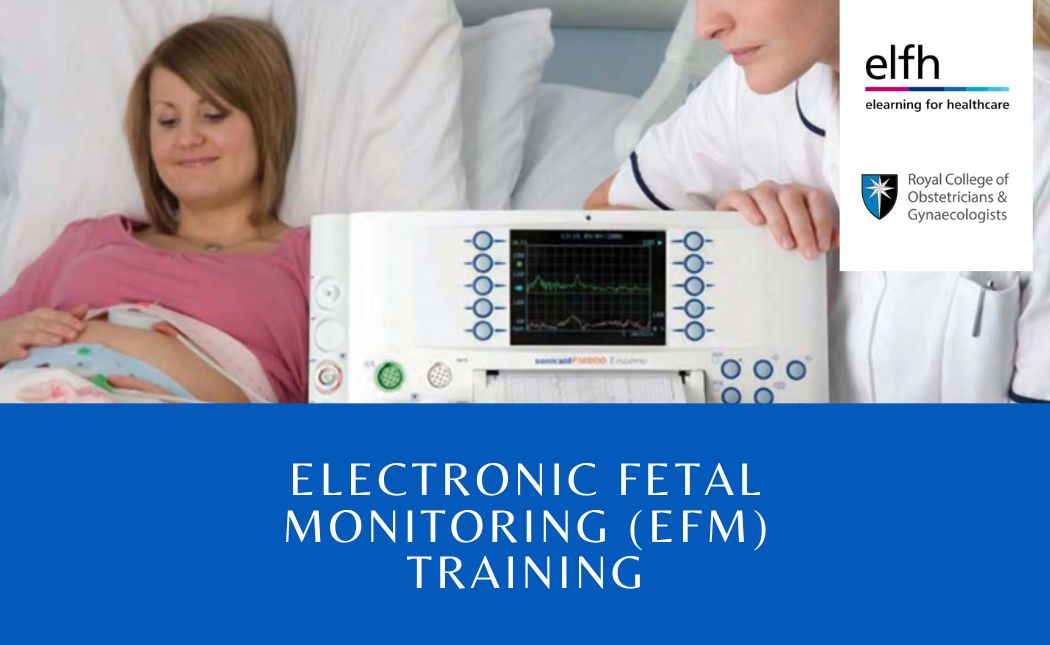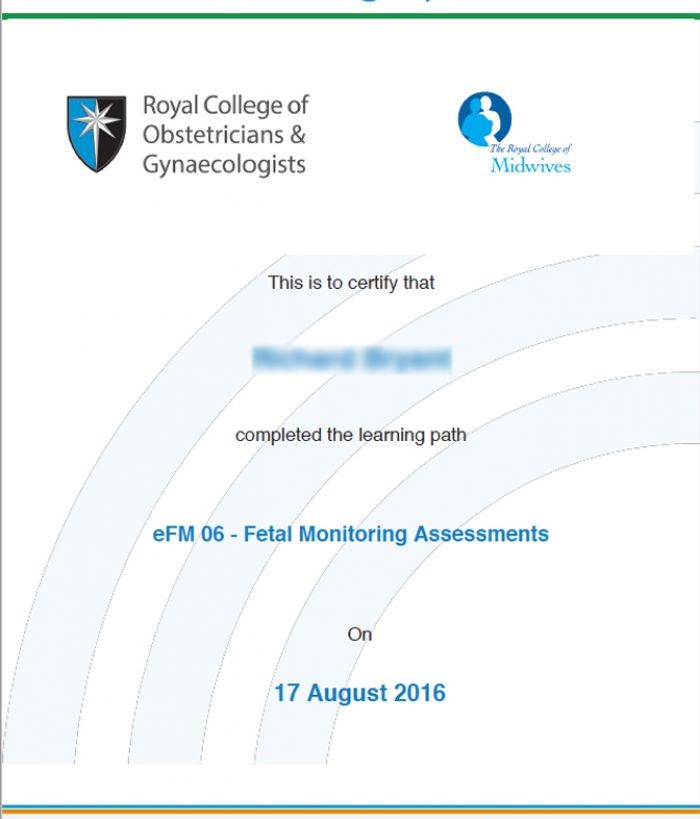
About Course
Electronic Fetal Monitoring (eFM) Training
This practical eFM training programme directed at obstetricians and midwives, focuses on building the skills to interpret cardiotocographs (CTG) correctly.
You can develop your knowledge on many related topics, including fetal heart rate issues, normal and abnormal traces, breech births and multiple pregnancies.
eFM Monitoring
During the sessions, you can interrogate CTG traces from real labours and give your interpretation and recommendations. You can then compare your findings with the outcome at the end of each session. You can also access an e-library and relevant articles from international journals.
This programme has been developed in the UK by the Royal College of Obstetricians and Gynaecologists, the Royal College of Midwives and NHS England elearning for healthcare.
Sample Certificate

